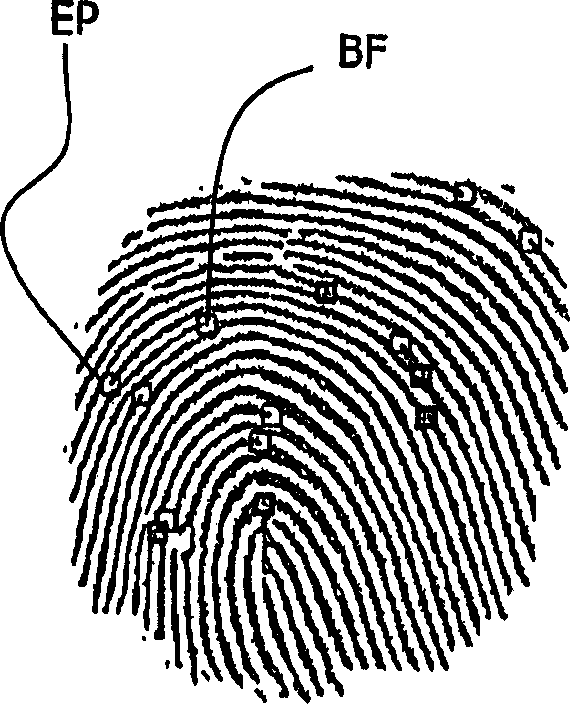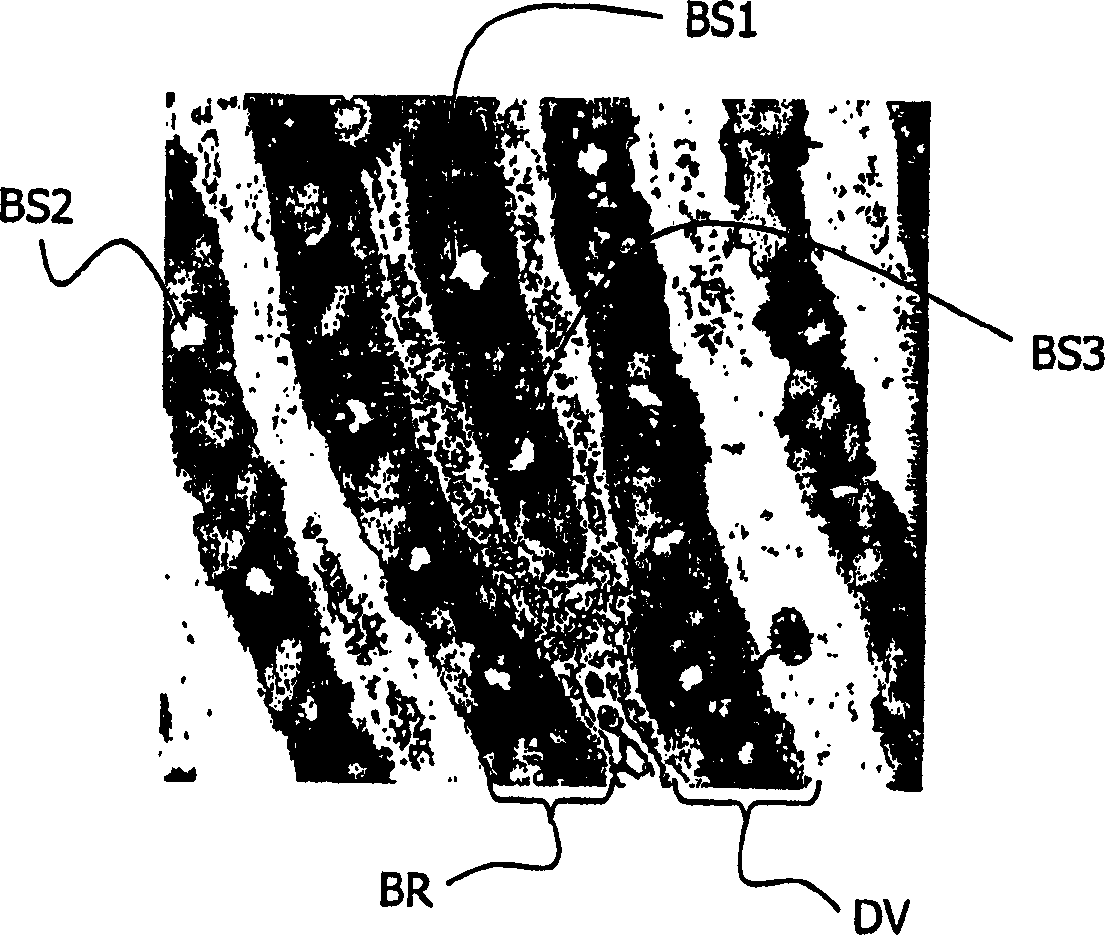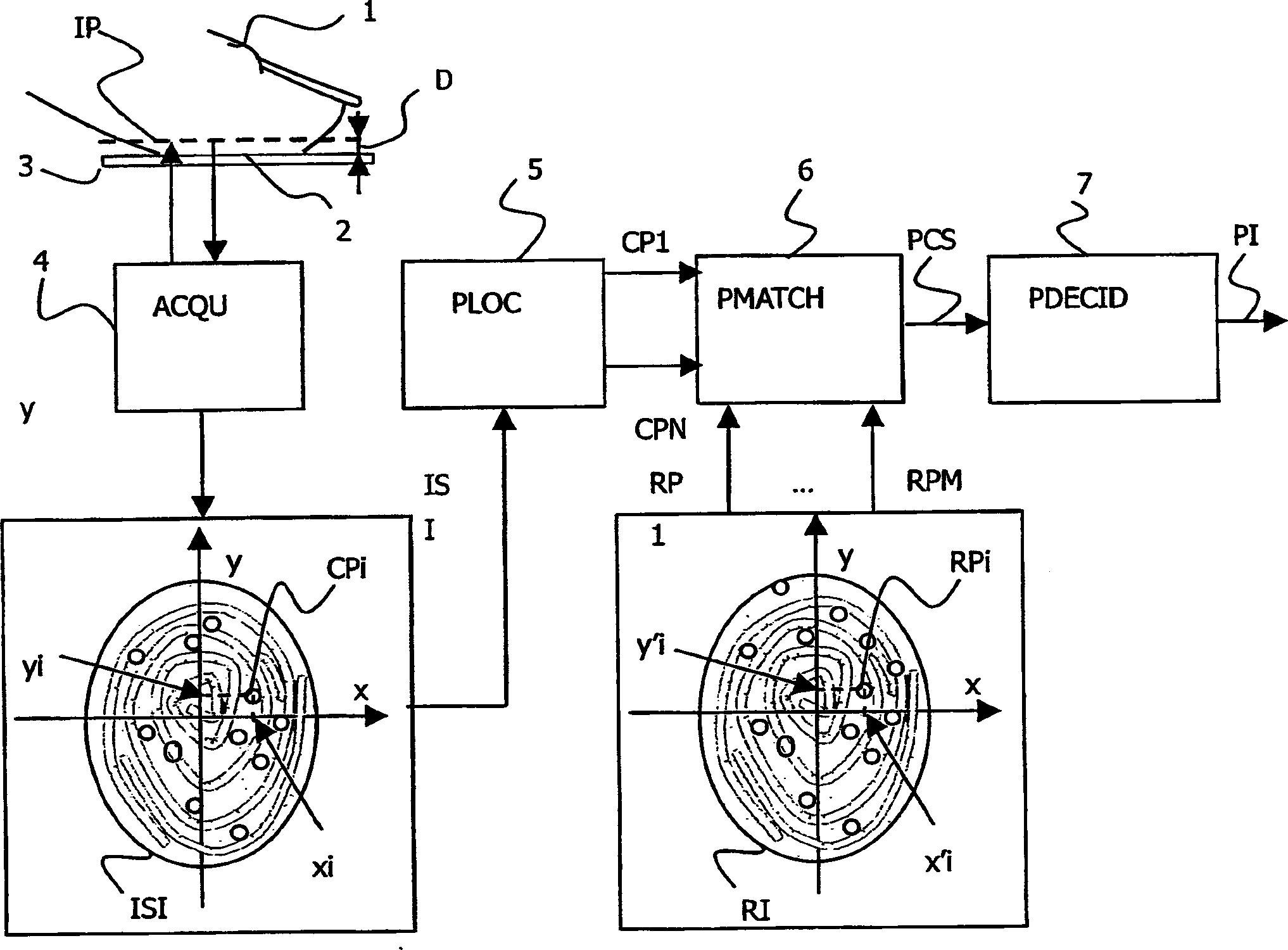Biometrical identification device
A technology for biometrics and device identification, applied in the field of access control based on biometrics, it can solve problems such as affecting pore detection, false acceptance and false rejection ratio, and pore data not being completely reliable.
- Summary
- Abstract
- Description
- Claims
- Application Information
AI Technical Summary
Problems solved by technology
Method used
Image
Examples
Embodiment Construction
[0028] Refer to figure 2 , The inner surface 2 of the personal finger 1 is pressed on the tablet 3 of the acquisition device 4. The acquiring device 4 is used to acquire the internal skin image ISI of the image plane IP of the finger 1, which is located inside the finger 1 which is a distance D from the inner surface 2. The distance D from the inner surface 2 of the finger is preferably selected to be greater than 0.1 mm and less than 0.5 mm.
[0029] image 3 The acquisition device 4 appearing in includes a radiation source 41 for generating a radiation beam 42, such as a laser beam or the like. The acquisition device 4 also includes a focusing device 43, such as an objective lens, for focusing the radiation beam 42 on the image plane IP inside the finger 1. The acquisition device 4 finally includes a detection device 44 for detecting the reflected radiation beam, the reflected beam 45 being reflected from the image plane IP.
[0030] Preferably, the acquisition device 4 includ...
PUM
 Login to View More
Login to View More Abstract
Description
Claims
Application Information
 Login to View More
Login to View More - R&D
- Intellectual Property
- Life Sciences
- Materials
- Tech Scout
- Unparalleled Data Quality
- Higher Quality Content
- 60% Fewer Hallucinations
Browse by: Latest US Patents, China's latest patents, Technical Efficacy Thesaurus, Application Domain, Technology Topic, Popular Technical Reports.
© 2025 PatSnap. All rights reserved.Legal|Privacy policy|Modern Slavery Act Transparency Statement|Sitemap|About US| Contact US: help@patsnap.com



